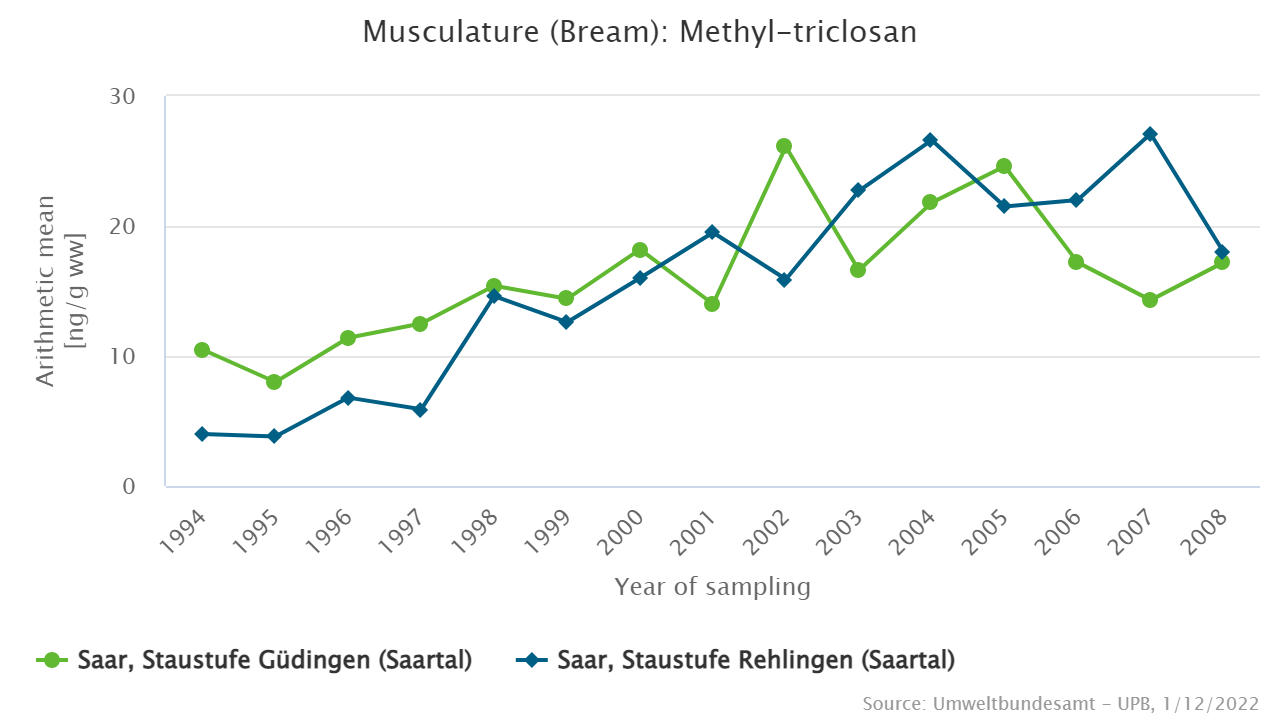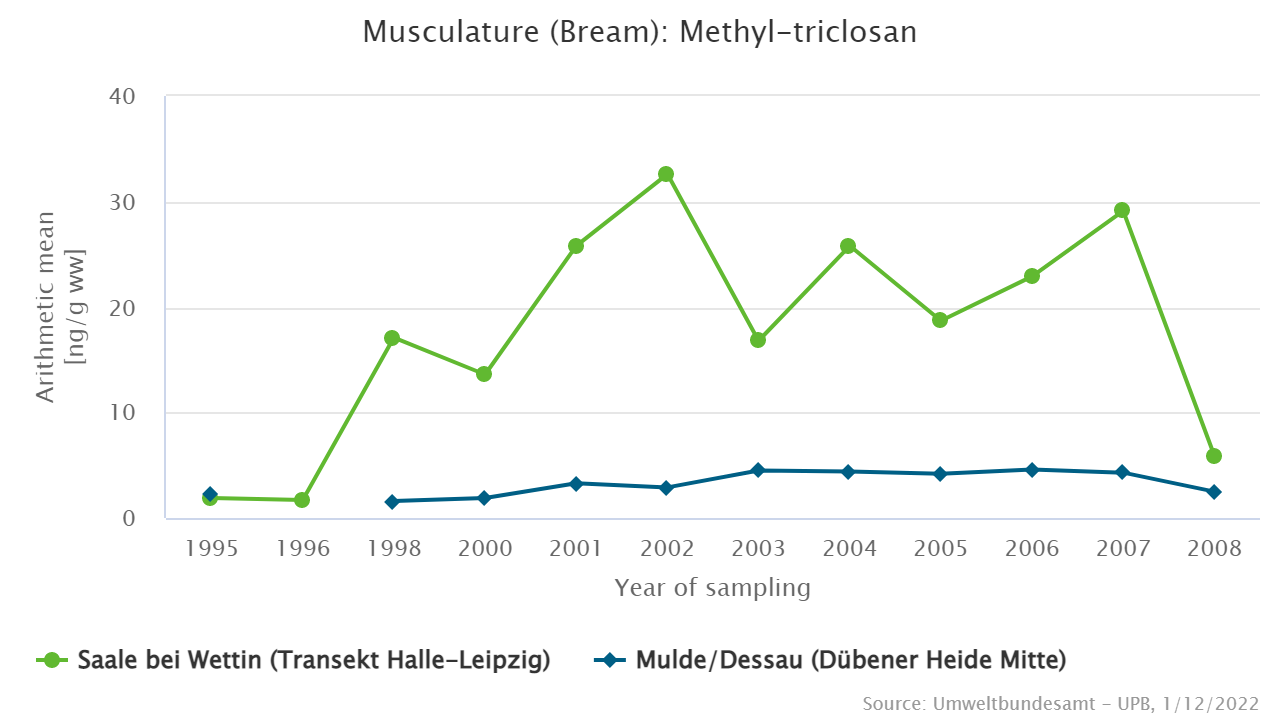The methylated main metabolite of triclosan is a long-term problem for the environment
Analysis of breams from different German rivers revealed highest methyl-triclosan burdens in bream from the rivers Saale, Saar and Rhine.
Triclosan is a synthetically produced chemical with antimicrobial properties. It is used as a disinfectant and preservative as well as for avoidance of unpleasant smells, e.g. in socks and sportswear since about 40 years. Furthermore, triclosan can be found in personal-care products such as shampoos, soap, deodorants and partly in tooth paste and pharmaceutical products. Regarding its environmental effects, triclosan is classified as hazardous to the environment
, very toxic to aquatic organisms
and may cause long-term adverse effects in the aquatic environment
. The environmental concentrations of triclosan, however, are low due to its relatively fast degradation.
A transformation product of triclosan, methyl-triclosan, is accumulated in aquatic organisms. Methyl-triclosan found in the environment seems to be a product of biological methylisation of triclosan. Most likely, the transformation is an unwanted effect in sewage treatment plants. From the point of precaution, accumulation in environmental compartments or organisms is an undesirable process.
In order to clarify whether triclosan and methyl-triclosan are found in organisms also under environmental conditions, retrospective monitorings were performed using bream from different German rivers. The focus was on present and past body burdens and whether time trends were apparent. The first time series covered the period 1994 to 2003, the second one the years 2004 to 2008.
Spatial concentration trends
Triclosan concentrations in breams are very low and in many cases below the limit of detection. Contamination with methyl-triclosan is significantly higher at all sampling sites.
In the river Rhine methyl-triclosan contamination of bream increases downstream.
The contrary is observed in Elbe-bream with the lowest methyl-triclosan levels found in the Lower Elbe (Blankenese).
Time trends
Fish from most sampling sites show increasing methyl-triclosan concentrations since the mid-1990s and decreases are often not observed before 2005/2007. At individual sites methyl-triclosan even increased again in 2008.


Display all data of the result description
Significance of the results
At present an ecological risk due to triclosan and its transformation product methyl-triclosan is not assumed at any ESB sampling site. Nevertheless, it has to be emphasized that persistence and accumulation of xenobiotics in organisms and environmental compartments are principally undesired. The temporal trends show that methyl-triclosan levels in bream have increased considerably at all sampling sites since the 1990s. For some but not all sampling sites the content decreases noticeably at the end of the investigation period (2008).
Therefore measures for reductions of triclosan emissions should be considered. A first step has already been made by the German Cosmetic, Toiletry, Perfumery and Detergent Association (IKW) who voluntarily renounced the use of TCS in washing and cleaning agents in 2001. Furthermore, an improved efficiency of sewage plant performance could reduce methyl-triclosan emissions.
Updated at: 2022-01-12
Extended information
Literature
-
Retrospective study of triclosan and methyl-triclosan residues in fish and suspended particulate matter: Results from the German Environmental Specimen Bank
Rüdel, Heinz; Böhmer, Walter; Müller, Martin; Fliedner, Annette; Ricking, Mathias; Teubner, Diana; Schröter-Kermani, Christa
Chemosphere 91 (2013), 11, 1517-1524, 2013
-
Retrospektives Monitoring von Triclosan und Methyltriclosan in Brassenmuskulaturproben der Umweltprobenbank (German)
Böhmer, Walter; Bernhardt, Thorsten; Rüdel, Heinz; Müller, Martin; Wenzel, Andrea
Fraunhofer-Institut für Molekularbiologie und Angewandte Oekologie, 2005
-
Retrospective Monitoring of Triclosan and Methyl-triclosan in Fish: Results from the German Environmental Specimen Bank
Böhmer, Walter; Rüdel, Heinz; Wenzel, Andrea; Schröter-Kermani, Christa
Organohalogen Compounds 66 (2004), 1516 - 1521, 2004